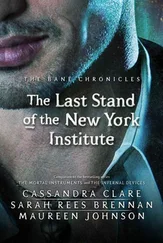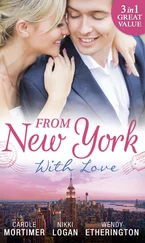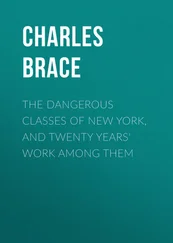We used to come back and drink until dawn, reciting the purplish sentimental poem by the radical journalist of the twenties John Reed, chanting together with dramatic fun (yet feeling a tingle at the same time) his hymn to New York: “Who that has known thee but shall burn / In exile till he come again / To do thy bitter will, O stern / Moon of the tides of men!” We called New York the Stern Moon, as in, “Wakefield, when you returning to the Stern Moon?”
After only four months in New Jersey—it seemed like four years—a letter came from C. Wright Mills, offering me a job. I let out a yelp of joy. Mills wrote that he’d been given a grant to hire a researcher for a new book he was writing on American intellectuals, and he’d like me to have the position. It meant taking a pay cut from the $70 a week I was making on the Packet to $60, and the job would last only six months, but those concerns seemed petty compared to the chance to get back to New York and immerse myself in literature and politics instead of deliberations of the town sewer commission. I gave Barney Kilgore notice enough to hire a replacement, and we parted with respect, if not rapport. I was on my way back to the Stern Moon.
I didn’t have to look for a place to live in Manhattan, but moved right in with the group of guys I’d been staying with when I came up on weekends from my exile. There were three of them sharing a one-bedroom apartment at 312 West 92nd Street, and they looked on adding a fourth roommate not as overcrowding but as a chance to lower the overhead. The rent was $120, and adding another body meant each paid only $30 a month instead of $40. Three single beds were crammed into the one bedroom, dormitory style, and one person slept on the living room couch on a rotating basis.
We discovered a covey of girls, just graduated from Wells College in Aurora, New York, who shared an apartment not far away, on West End Avenue. They split four ways what seemed to us the extravagant rent of $200 for a roomy, nicely furnished two-bedroom apartment with high-ceilinged living room and dining room, paying shares from salaries of $40 to $50 a week earned from working on magazines and teaching school. We met through my high school friend Jane Adler, who had also gone to Wells, and I introduced the girls to the guys in our gang.
A series of “exchange” parties and dinners ensued, and we learned to love the more ambitious dinner dish of the West End Avenue girls, the famous tuna noodle casserole, held together with Campbell’s cream of mushroom soup. Our only complaint, which we kept a secret, was what seemed to us the skimpiness of the portions they served, and we took to stuffing ourselves with Ritz crackers before arriving for one of their meals. All of us became friends, and two couples became husbands and wives, and lived happily ever after. (Only in the fifties.)
Other apartments of young guys and gals new to New York were meeting and mating in similar fashion. Like many young women during their first days in the city, Ann Montgomery had lived at a women’s residence when she arrived: “My father, a classics professor at Miami University in Ohio, arranged for me to stay at the Parnassus Girls’ Club at 112th and Broadway, knowing I’d be safe and have at least two meals a day.” But soon she met some friends from her college who were sharing an apartment on West 95th Street and were looking for another roommate: “There were five of us, and I think we each paid $60 a month,” Ann recalls. “We used to have pajama parties. The boys in the apartment upstairs would come down in their pajamas and we’d all drink beer, then the boys would go upstairs again. The exciting part was that we were in our nightgowns and the boys in their pajamas. One of the boys married one of the girls.”
Just as young women fresh off the train stayed first at women’s clubs, young men sometimes spent their first nights, as Richard Lingeman did, at the YMCA. “I stayed at the Sloane House Y on 34th Street. It was a huge place, with strange people—I have this memory of men speaking desperately on the phone. Then I got into an apartment with six or eight other guys on York Avenue, and after that moved to West 13th in the Village where I shared an apartment with Chris Lehmann-Haupt.”
Not everyone found comradeship when starting out in the city. John Gregory Dunne says, “I first lived in a roominghouse at 43 East 75th Street that was populated by every failure in New York. A guy who had failed the New York Bar exam twice, and failed a third time while he was there, was typical. There were four people to a room, but it had a fancy address in a good-looking townhouse between Madison and Park. Eating was on the honor system. There was a big refrigerator and pantry and a price list—a Ritz cracker was four cents, with peanut butter it went up to seven cents. A glass of milk was a dime. I was accused of cheating on kitchen privileges, so after that I never ate anything there.”
Most of us did a lot of moving around with what now seems remarkable ease, the ease that comes with the freedom of youth. That’s what strikes Meg Greenfield when she recalls coming back from Europe to live in New York in 1955: “I was moved from my first apartment on 11th Street to a better one on 10th Street by Kenneth Koch, the poet, and his wife, Janice, who were pals of mine. We had been to some dinner with poets and painters, and we came back late with their baby’s English perambulator to move all my things in—I remember crossing Hudson Street with that perambulator. It was late at night and people were staring at us. We were able to move all my earthy goods in two loads of their baby carriage. Can you imagine that? And we didn’t have other baggage, either.”
Bruce Jay Friedman remembers: “When I got out of the Air Force in ’53, I moved to New York with my wife, Ginger, who I met when I was stationed in St. Louis, and we found an apartment on West 57th. Like a lot of New Yorkers, we bragged about the building where we lived in terms of what well-known people lived there. In our building we had Betty Clooney, sister of Rosemary, and Julia Meade, a TV hostess of the time. Also, we went to the same pizza place on Ninth Avenue as Patty Duke. She was nine years old then, but we were proud of the fact that we went to the same place for pizza.”
There was a sense that because you lived in New York, you were part of “the scene” and had some connection with famous people—actors, writers, politicians, piano players. They were your neighbors in the biggest small town in the world. I remember riding in a cab up Park Avenue after a snowstorm and seeing a woman at the curb waving to get a ride going the other way. As we got closer, I saw it was Eleanor Roosevelt. I smiled and waved to her, and she smiled and waved back. I felt that I knew her. We were both New Yorkers.
The puffs of smoke from the pipe of C. Wright Mills as he paced back and forth in his study, thinking aloud, reminded me of steam from an engine, for his mind in high gear seemed like a dynamo. The exciting part of my job with Mills was not the research work I did in Columbia’s Butler Library that summer of 1955 when I moved back to New York from Princeton, but the day every week or so I went up to his house near Nyack, reporting and discussing my findings. I’d listen as Mills roamed his rustic, sunlit study filled with books and file cabinets, asking me questions and commenting on what I’d found in my research.
When the classes he taught resumed in the fall, I moved my notes and typewriter into Mills’s office in Hamilton Hall and worked out of there. But his real office was at home. The Columbia office simply contained old student papers, files of finished projects, a hot plate for warming up soup, and an electric espresso machine—this utilitarian gear was all he desired in that room. Neither his stomach nor his mind operated with its usual gargantuan appetite at the college office, and our talks there were disjointed and disappointing. Mills always seemed subdued when he came in, spoke very little, and stalked off to class. He would usually burst back into the room tired and out of sorts, as he had that day when he slammed down his books and said, referring to his students, “Who are these guys?”
Читать дальше












